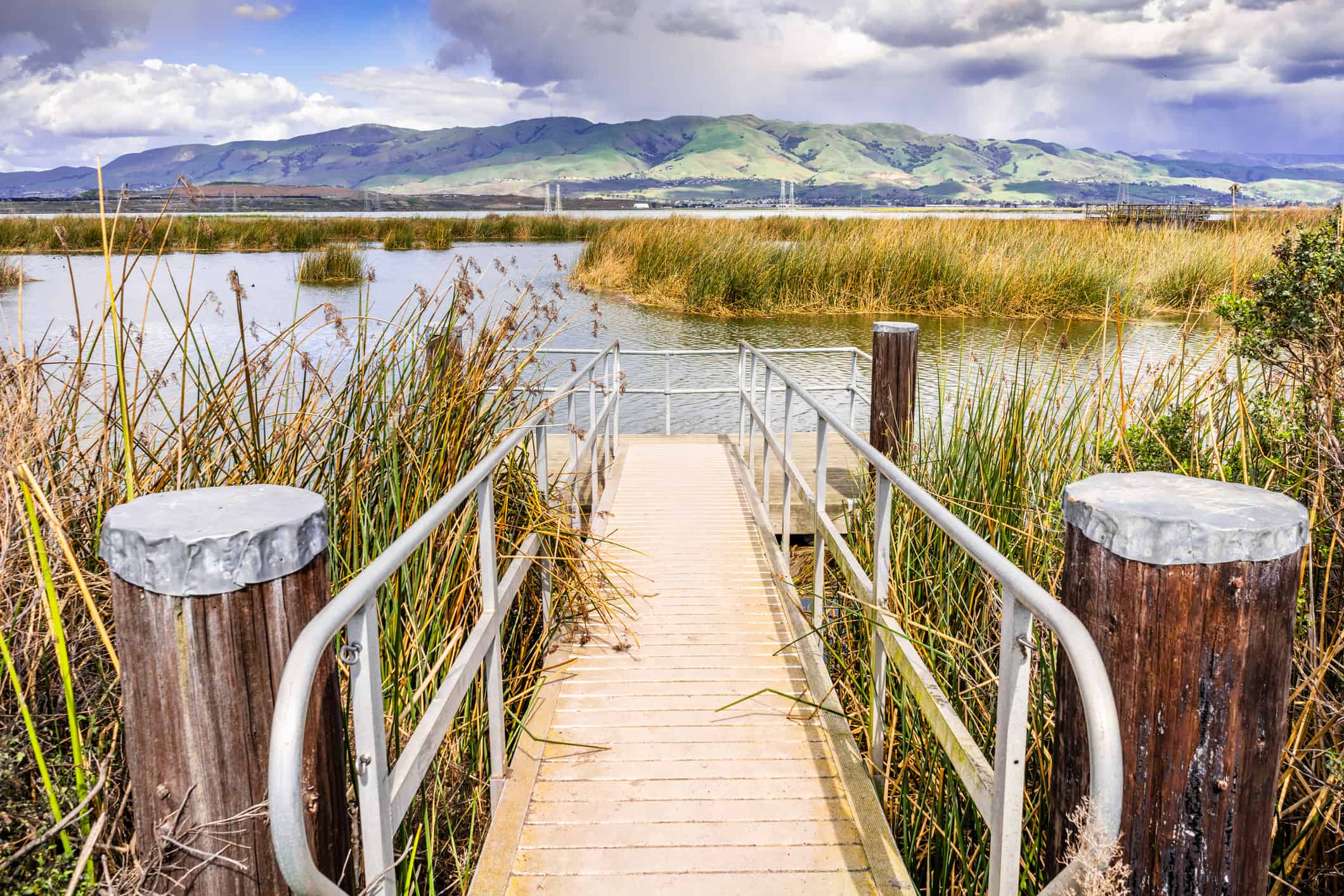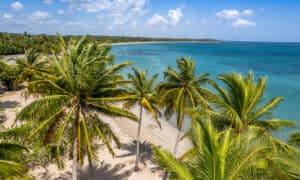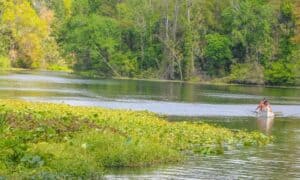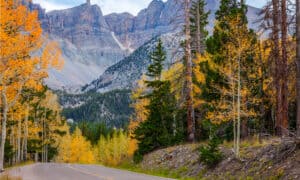Wherever you’re headed on your next vacation, chances are you’ll be near some incredible parks to enjoy. It might surprise you to learn which places have the largest city parks in America, too, with some surprising locations. You’ll find massive parks in Alaska and Texas, as you’d expect. But Alabama, Arizona, and Virginia all rank among the top 15 largest, too.
Let’s take a look and see if one of these fantastic, big parks is near your next destination. Maybe you’ll find the perfect spot for a family outing or a relaxing afternoon on your own.
Top 15 Biggest City Parks in the United States
| Rank | Name | Acres | Location |
|---|---|---|---|
| #1 | Chugach State Park | 495,204 | Anchorage, Alaska |
| #2 | Timucuan Ecological and Historic Preserve | 46,000 | Jacksonville, Florida |
| #3 | McDowell Sonoran Preserve | 30,580 | Scottsdale, Arizona |
| #4 | Don Edwards San Francisco Bay National Wildlife Refuge | 30,000 | San Jose, California |
| #5 | Franklin Mountains State Park | 26,627 | El Paso, Texas |
| #6 | Gateway National Recreation Area | 26,607 | New York, New York |
| #7 | Bayou Sauvage National Wildlife Refuge | 25,270 | New Orleans, Louisiana |
| #8 | South Mountain Preserve | 16,283 | Phoenix, Arizona |
| #9 | Carvins Cove Natural Reserve | 12,700 | Roanoke, Virginia |
| #10 | Eufaula National Wildlife Refuge | 11,184 | Eufaula, Alabama |
| #11 | Cullen Park | 10,500 | Houston, Texas |
| #12 | Trinity River Park | 10,000 | Dallas, Texas |
| #13 | George Bush Park | 7,800 | Houston, Texas |
| #14 | Newport News Park | 7,711 | Newport News, Virginia |
| #15 | North Mountain Preserve | 7,500 | Phoenix, Arizona |
Chugach State Park, Alaska
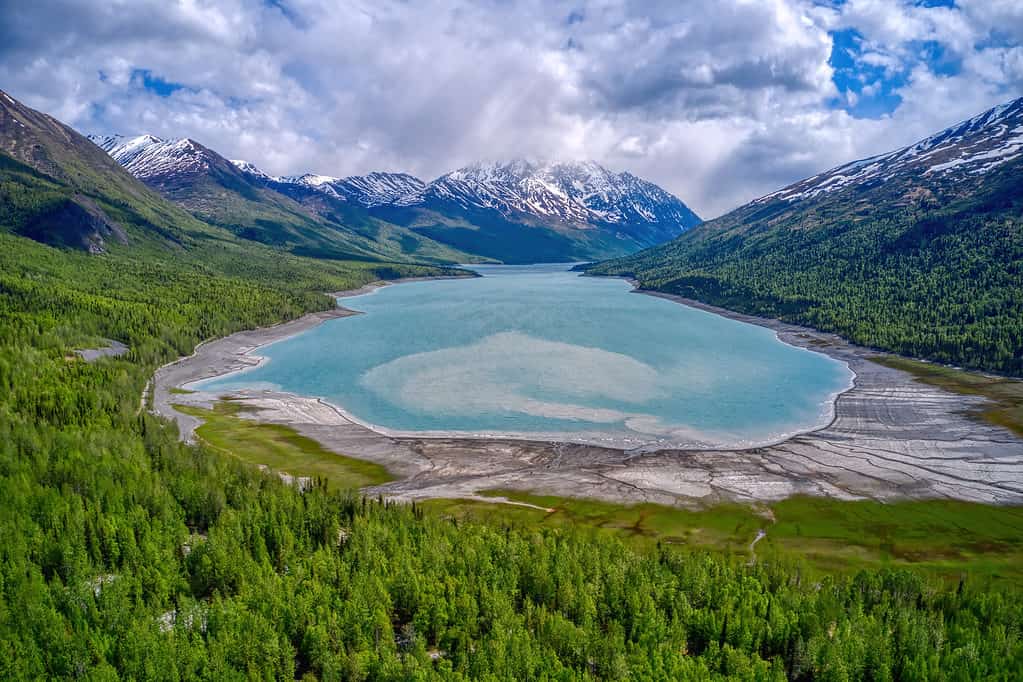
Lake Elutnka is located in Alaska’s Chugach State Park, the largest “city park” in the country.
©Jacob Boomsma/Shutterstock.com
Located in Southcentral Alaska, Chugach State Park may technically “belong” to the state but it is treated and experienced as a city park by those local to Anchorage. Located mostly within the municipality, the park contains around 495,000 acres of beautiful land and ranks as one of the largest state parks and simultaneously the largest city park in the USA. Bounded by the Alaska Range, Chugach and Wrangell Mountains, and Prince William Sound, the park contains a diverse terrain and topography. Ocean shoreline, numerous lakes, giant glaciers, and ice fields as just some of what you’ll find within.
The park rests just seven miles from downtown, with campgrounds, hiking trails, rental cabins, picnic pavilions, biking trails, off-road vehicle trails, boat launches, and more. You may also enjoy river rafting, horseback riding, and snowmobiling within park bounds.
Timucuan Ecological and Historic Preserve, Florida
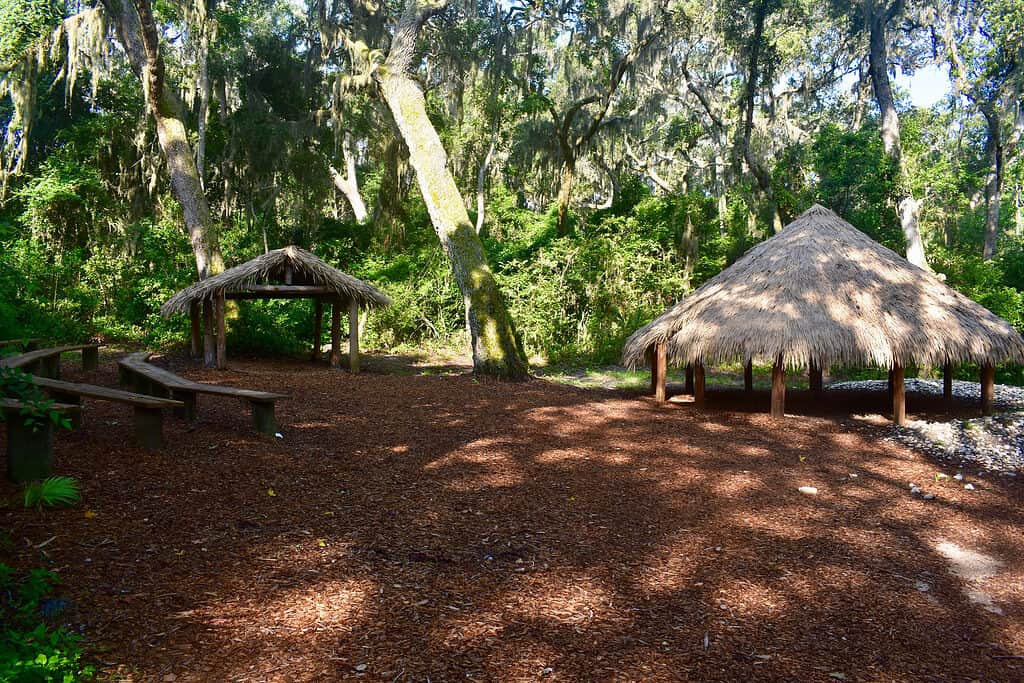
Huts and Amphitheater, Fort Caroline National Monument, Timucuan Ecological and Historic Preserve. These are just part of the unique setup in the park for visitors to explore the history of the region.
©Lindsey Martin Webb/Shutterstock.com
A U.S. National Preserve tucked into Jacksonville, Florida, the Timucuan Ecological and Historic Preserve contains 46,000 acres of waterways, wetlands, and other natural habitats. The National Park Service manages the park in cooperation with Jacksonville and Florida State Parks. The city/state/national park contains mostly natural areas but also houses the Fort Caroline National Memorial and historic Kingsley Plantation.
The preserve was established in 1988, expanding by 1999, and was named for the Timucua Nation, who originally had 35 chiefdoms throughout this region of Florida and south Georgia during the Spanish colonization. Today, archaeological excavations have uncovered multiple artifacts, including the second-oldest known pottery remnants in the United States.
There’s plenty to do in the park, apart from visiting the historic sites. Numerous trails weave their way through, a visitor center welcomes guests with information and exhibits and ranger talks, along with hosting an Artist in Residence program. Enjoy some hiking and make your way to the observation tower or wetlands wildlife viewing platforms, hit the beach, or take in some fishing.
McDowell Sonoran Preserve, Arizona
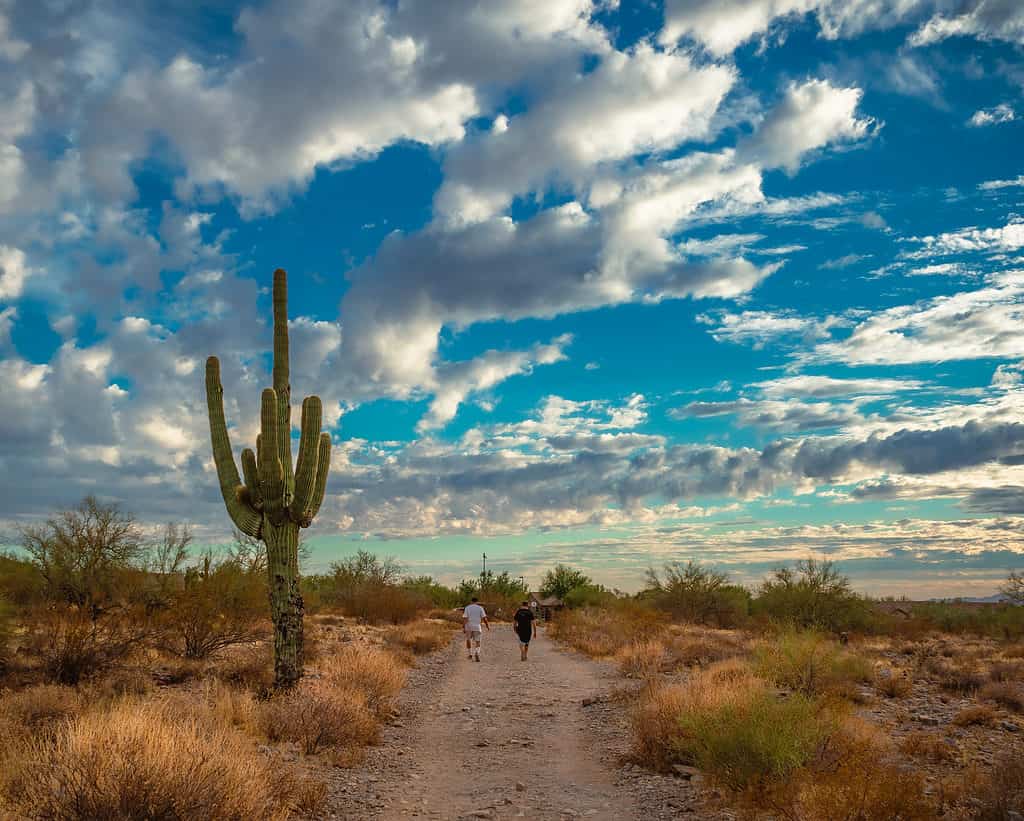
Scottsdale McDowell Sonoran Preserve desert habitat provides locals and visitors with plenty of activities and natural beauty.
©86Eric_Anthony_Mischke 86/Shutterstock.com
Perhaps one of the best-known city parks is the McDowell Sonoran Preserve, frequently visited by folks from around the world. The preserve offers visitors many activities but primarily serves as a safe haven for wildlife in the area.
In the park, you can enjoy hiking along many trails, including several accessible trails. Additionally, find:
- Horseback riding
- Public restrooms
- Shade ramadas
- Covered amphitheater
- Interpretive signage
- Bike trails
- Archery,
- Hunting
- Dog-permitted trails
- Guided hikes
Don Edwards San Francisco Bay National Wildlife Refuge, California

In Don Edwards San Francisco Bay National Wildlife Refuge, one of the largest city parks in the United States, you’ll find incredible marsh viewing platforms and other stunning scenery.
©iStock.com/Sundry Photography
Situated in San Francisco, the Don Edwards San Francisco Bay National Wildlife Refuge lays claim as the largest city park in California. The wildlife refuge rests in the southern part of the Bay area, with a refuge headquarters and visitor center in the Baylands district of Fremont. The refuge stretches through marshy shoreline and contains Bair Island in San Mateo County.
Founded in 1974, the park became the first urban National Wildlife Refuge in the United States. The park is dedicated to preserving natural habitat for the local wildlife, while also providing folks with a safe outdoor space for exploration.
The refuge sees more than 280 species of birds each year, including some rare and endangered species. The 30,000 acres contain multiple habitat types as well, including upland and vernal pools, salt ponds, salt marshes, open bay, and others.
Franklin Mountains State Park, Texas

The beautiful Franklin Mountains State Park ranks as one of the largest city parks in the country with 27,000 acres.
©Piotr Kalinowski Photos/Shutterstock.com
Texas has some pretty incredible parks, including the Franklin Mountains State Park, located 15 minutes from El Paso. The high desert mountains within the park offer hiking, biking, rock climbing, camping, geocaching, wildlife viewing and birding, picnicking, trail running, and more. The park encompasses 27,000 acres, with over 100 miles of trails. While here, you can visit the park store, pitch a tent, or enjoy ATVing. Ranger programs occur regularly, as well.
Gateway National Recreation Area, New York

Gateway National Recreation Area rests in New York City, spanning to New Jersey.
©Brian Logan Photography/Shutterstock.com
Tucked into New York City and Monmouth County, New Jersey, the Gateway National Recreation Area takes up 26,607 acres. The park provides loads of opportunities for recreation for humans and protection for wildlife not typically found in major urban areas.
When visiting the park, you’ll find plenty of opportunities for birding, boating, hiking, camping, ocean swimming, trail running, biking, and more. The Gateway Area was designated by the U.S. Congress in 1972 for the specific protection of scarce and unique natural and cultural resources in the area. The area comprises three units and eleven park sites in total.
Bayou Sauvage Urban National Wildlife Refuge, Louisiana

The Bayou Sauvage Urban National Wildlife Refuge offers a unique choice for city dwellers to experience incredible wildlife in New Orleans.
©jaimie tuchman/Shutterstock.com
Louisiana offers one of the largest city parks in the form of the Bayou Sauvage Urban National Wildlife Refuge. This distinctive park in New Orleans contains one of the last remaining marsh areas adjacent to Pontchartrain and Borgne. Many wildlife habitats within provide homes for numerous species on the 27,190 acres. You’ll find bottomland hardwood forests, freshwater, brackish, estuarine tidal marshes, lagoons, natural bayous, and canals, among others.
Folks come here to enjoy wildlife viewing and birding, as well as crabbing, hiking, paddling, nature photography, fishing, self-guided tours, waterfowl hunting, education programs, hiking, walking, and biking.
South Mountain Preserve, Arizona

The stunning South Mountain Park Preserve lies just outside Phoenix, Arizona, making it one of the largest city parks in America.
©antsdrone/Shutterstock.com
Made up of more than 16,000 acres, the South Mountain Preserve contains three mountain ranges. The Ma Ha Tauk, Gila, and Guadalupe ranges offer plenty of opportunities for hiking, horseback riding, and mountain biking throughout the park. The highest point of the park, Dobbins Lookout, may be accessed by hiking the trails or driving the Summit Road. The lookout offers unsurpassed panoramic views of the valley.
Every Sunday, the park observes “Silent Sunday” during which the main roadways may not be accessed by motorized vehicles during most hours of the day. On these days, the mountainsides come alive with cycling, jogging, hiking, and running without fear of collision.
Primary landmarks and attractions include the 50—plus miles of trails, Dobbins Lookout, horseback riding trails, the South Mountain Environmental Education Center, and the Mystery Castle.
Carvins Cove Natural Reserve, Virginia
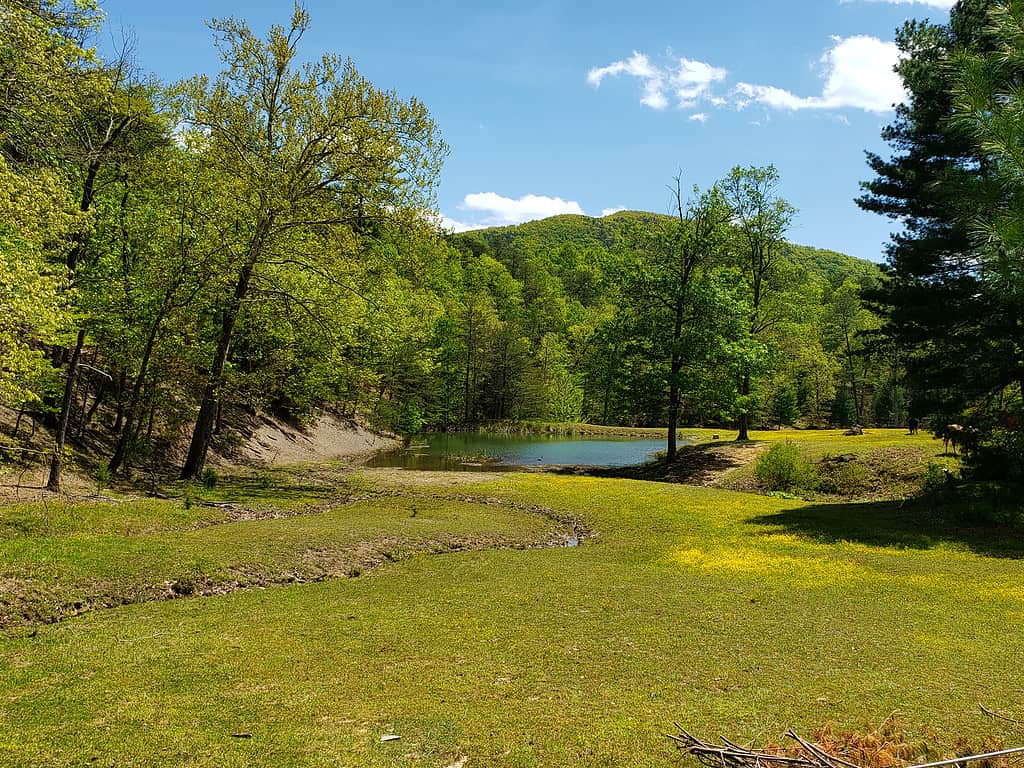
Roanoke, Virginia, is host to the beautiful Carvins Cove Nature Preserve, with its 12,000 acres.
©Kama Linden/ via Getty Images
Just seven miles north of Roanoke, Carvins Cove Natural Reserve in Virginia contains more than 12,000 acres. Here, you’ll find hardwood and mixed pine forests, a 630-acre reservoir, 60 miles of trails for mountain biking, trail running, hiking, and horseback riding. The majority of the park is protected conservation easement.
Within the park, visitors enjoy a variety of amenities, including the boat landing at the reservoir, numerous hiking and biking trails, fishing holes, and the Roanoke Regional Water Pollution Control Plant for birding (permit required).
Eufaula National Wildlife Refuge, Alabama/Georgia
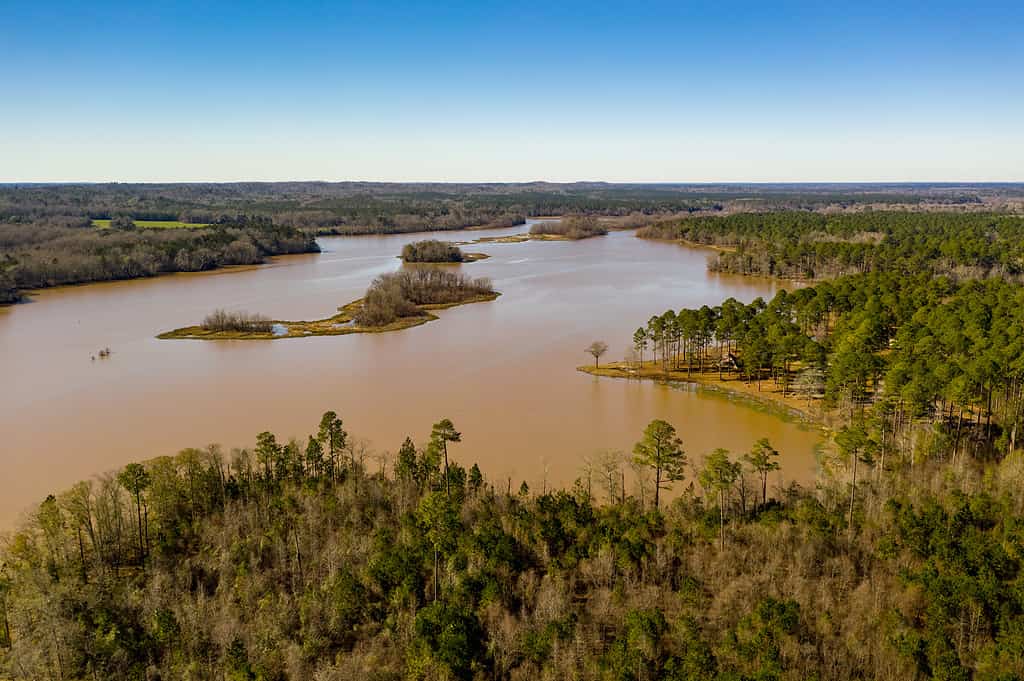
An aerial photo landscape Eufaula Alabama shows the magnitude of 11,184 acres of swampy, marshland and woodland habitat in the Alabama Eufaula National Wildlife Refuge.
©Felix Mizioznikov/Shutterstock.com
Taking up 11,184 acres of land, the Eufaula National Wildlife Refuge rests within the Barbour and Russell counties in Alabama and Stewart and Quitman counties of Georgia. This incredible area contains Lake Eufaula (or Walter F. George Lake) and provides refuge for many wildlife species. Several endangered and threatened species, like the wood stork, make their homes here. Some 4,000 acres of open water, 3,000 acres of wetlands, 2,000 acres of woodlands, and 1,000 acres of grasslands provide many habitat settings for their safety.
Among the many creatures that could be spotted here, you might find gray foxes, doves, bobcats, beavers, raccoons, river otters, coyotes, armadillos, and owls. Within the park, humans enjoy fishing, boating, auto-touring, observation tours, and walking trails.
Cullen Park, Texas
Head on over to Cullen Park for a 10,5000-acre park with loads of picnic tables, a shaded playground, benches, and more for a relaxing day. The beautiful park provides visitors with loads of shade (a much-needed thing in the hot south!) and trails winding through the woods. Hiking and biking are popular activities in this city park situated in the western regions of Houston.
The land specifically serves as a flood control project, using earthen dams built by the U.S. Army Corps of Engineers. This dammed in area contains two reservoirs, including Addicks Reservoir where Cullen Park lies.
Folks enjoy numerous activities in the park, including baseball at the diamond, playgrounds, picnics, soccer fields, nature trails, the Alkek Velodrome, the splash pad, pavilions, wildlife viewing, birding, and much more.
Trinity River Park, Texas
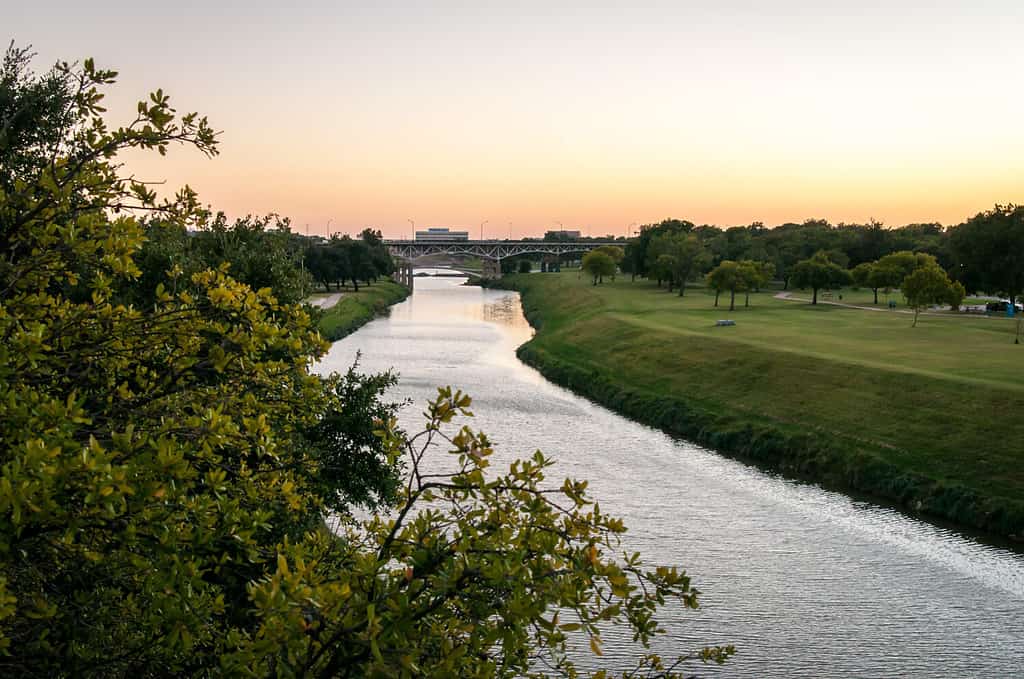
Trinity River Park, containing 10,000 acres, is one of the largest city parks in Texas and the United States.
©Megan McHatten/Shutterstock.com
Dedicated in 1892, Trinity River Park in Texas is not only one of the largest parks, but it is one of the oldest. The 10,000-acre city park provides locals with a lot of amenities that they love, as well as many for visitors. Here you’ll find basketball courts, benches, bike racks, drinking fountains, electrical boxes, bridges, and grills. You’ll also spot an observation deck from which to enjoy the natural beauty, plenty of lighting, and shelters, swings, and playgrounds.
The park was actually the first parkland property in the Fort Worth area, thanks to the foresight of the city leaders back in the day.
Within the park, you can enjoy over 100 miles of paved trails which also connect to other surrounding cities and locales. Bike or run to Dallas, take the kids to the duckpond or hang out at the WPA shelter. Or, if you’re lucky, enjoy some Shakespeare in the park, hosted annually there.
George Bush Park, Texas
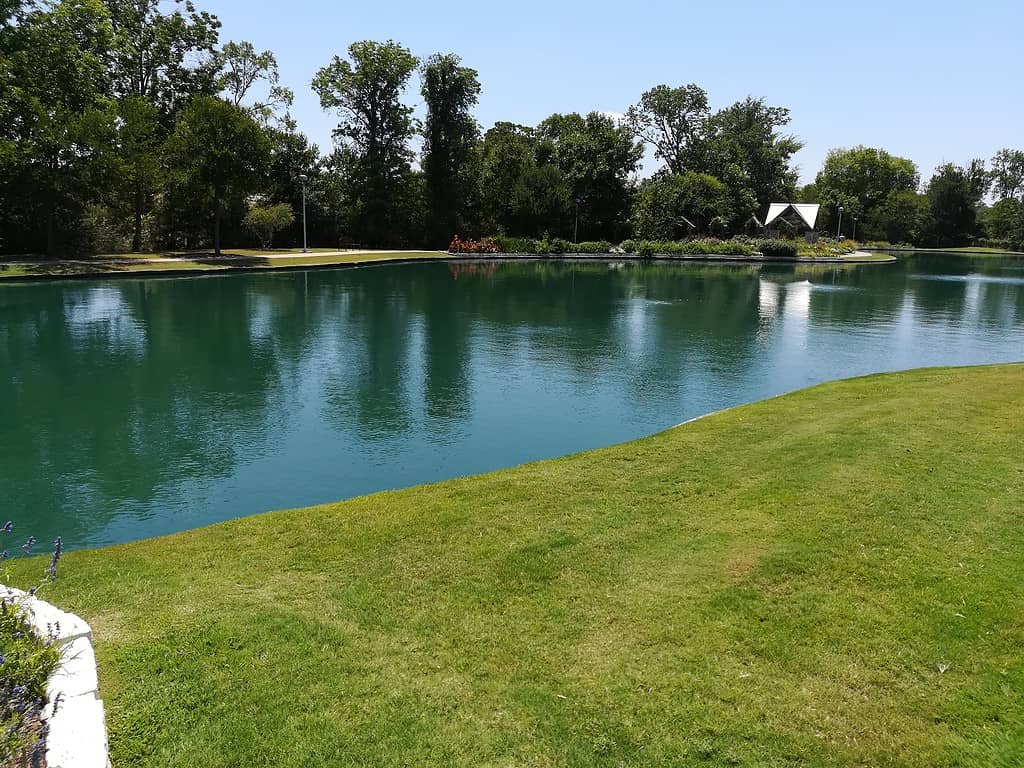
The George Bush Park in Houston, Texas, welcomes visitors with its 7,800 acres of ponds, jogging trails, and soccer fields.
©AwalR/Shutterstock.com
Situated in Houston, the George Bush Park welcomes visitors all year round to its glorious 7,800 acres of lush greenery and natural beauty. The park is named, of course, after American President George H.W. Bush and serves as a nature reserve.
Most attractions of the park may be found alone Westheimer Parkway, including the shooting range, playgrounds, ponds, jogging trails, a large soccer field, and many pavilions for picnickers. Many of the jogging trails make their way through bayous, forestland, and swamps, so wear your bug repellent!
Biking, jogging, trail running, speed biking, and birding all make up some of the most favored activities in the park. You’ll also find a boardwalk and bridges, park benches, baseball fields, a dog park, public restrooms, rock climbing, model airplane fields, tennis and volleyball courts, archery, horseshoes, and picnic grounds.
Newport News Park, Virginia
East of the Mississippi, one of the largest parks, is the Newport News Park in the town of that name in Virginia. The municipal park uses 7,500-plus acres to provide visitors with tons of activities and amenities, as well as a safe haven for wildlife. You’ll find biking, hiking, mountain biking, paddle boating, Jon boats, canoeing, picnicking, archery, and fishing. You can also camp at one of the 188 campsites, using electric hookups, grills, and concrete pads.
Part of the campgrounds rests on the site where George Washington held headquarters during the American Revolutionary War. You can see a plaque at the site.
The park also contains an 18-hole championship disc golf course and a 30-acre model airplane flying field. You’ll find boat and bike rentals available at the camp store. You can visit the Discovery Center for nature display, historical artifacts, and some hands-on activities. Be sure to visit the Japanese Peace Garden and enjoy the bridges, floral gardens, and birding and wildlife trails.
North Mountain Preserve, Arizona
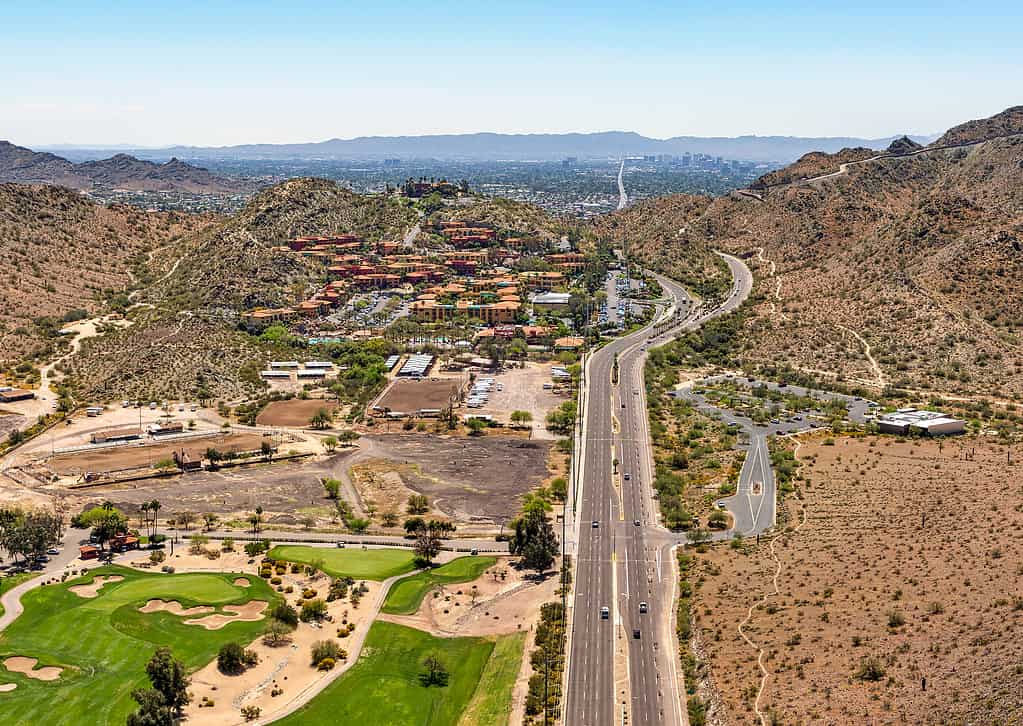
Aerial view looking south down 7th street towards downtown Phoenix, Arizona from above the North Mountain Preserve area. The park is one of the largest city parks in the country.
©Roberts Photography/Shutterstock.com
Open from 6 a.m. to 7 p.m., North Mountain Preserve in Phoenix, Arizona, ranks as the fifteenth largest city park in the United States. From June 1 to September 30, they have longer hours, extending from 5 a.m. The park contains Shaw Butte and North Mountain, both prominent features of the local terrain. The mountain peak climbs to 2,104 feet, while the butte rests at 2,149 feet.
The park largely welcomes hikers looking to summit the mountain all the way to casual hikers looking for a lovely trail. To learn more about the many trails, head to the Visitor’s Center, where volunteers can help you find the right trail to adventure. You’ll also have the opportunity to learn about Sonoran wildlife and regional history while visiting the park.
Thank you for reading! Have some feedback for us? Contact the AZ Animals editorial team.

